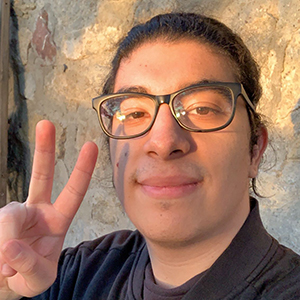Project HAPPIEST
H-A-P-P-I-E-S-T
Health, Air Pollution and Population Initiative in Education and Science Training
About the program
Air pollution negatively affects the majority of the US population. It causes respiratory
illnesses, neurological and mental health problems, and reproductive ailments. Air
pollution is particularly acute in Utah’s Salt Lake Valley, where the University of
Utah is located. The area’s topography produces temperature inversions in the winter,
leading to stagnant conditions and poor air quality with well-documented human health
effects. Since the impacts of pollution are worse in racial/ethnic minority and low-income
communities, it is imperative to engage researchers from these communities in addressing
the complex problems of air quality and environmental inequity. However, scientists
from racial/ethnic minority backgrounds are underrepresented among faculty at US universities.
Various strategies have been implemented in higher education to diversify the US research
workforce, and faculty-mentored research experiences for undergraduate students have
been shown to be particularly successful. Given this evidence, this program trains
students from underrepresented backgrounds in air pollution-related health research
through a faculty-mentored summer research program called Health, Air Pollution and Population Initiative in Education and Science Training (HAPPIEST).
HAPPIEST 2024 will take place May 19, 2025-August 1, 2025
The HAPPIEST experience
HAPPIEST is structured by a mentoring “community of practice,” which supports an evidence-based ten-week summer training program for undergraduate students in the area of environmental health science. This community includes four teams, each comprised of two undergraduate students, one graduate student training coordinator, and one faculty mentor. Teams work on locally relevant air pollution and health research projects, with the potential for interdisciplinary integration across teams. Eight undergraduate students are funded each summer, for a total of forty between Summer 2021 and Summer 2025. The program leverages a unique partnership with the UOU’s successful Summer Program for Undergraduate Research. The program prepares students for placement into competitive graduate programs in the environmental health sciences. HAPPIEST also fuels interdisciplinary collaborations among faculty mentors with the goal of informing novel solutions to environmental health problems in the Salt Lake Valley and beyond.
![]()
Selected students receive a stipend of $5,000 (less applicable taxes) over the course of the program. Up to 4 students each summer also receive on-campus housing.
Students become part of the community of practice. They conduct their research alongside another HAPPIEST trainee. The two undergraduate work closely with a HAPPIEST-funded graduate student training coordinator, and a faculty mentor. They work ~35 hours/week on their research tasks. They also attend SPUR programming and several HAPPIEST professional development workshops that are specific to environmental health.
HAPPIEST students conduct research focused on contextually-relevant environmental health problems that disproportionately affects racial/ethnic minority communities in the Salt Lake Valley. Depending on the specific research project, this allows some student participants to give back to their communities.
Each student receives financial support to present their research at a regional or national meeting in the year after their summer research experience. Faculty mentors and graduate student training coordinators mentor the student through the process of presenting at a conference.
Sara Grineski
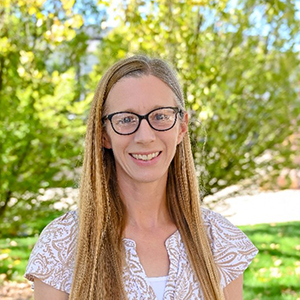
Dr. Grineski is an active researcher in the area of environmental health; furthermore,
she is an experienced director of undergraduate research training programs. She is
also the director of undergraduate studies in Sociology at UOU and co-director of
the UOU’s Center for Natural and Technological Hazards (with HAPPIEST Co-Director
Collins)and co-director of the Wilkes Scholars Program. Grineski’s environmental health
research has been supported by the National Institute of Minority Health and Health
Disparities with an award towards the Center of Excellence in Environmental Health
Disparities, which she directed at the University of Texas at El Paso (UTEP), as well
as by the National Science Foundation and the Environmental Protection Agency. Grineski
gained experience in managing undergraduate research training programs while at UTEP.
She was a PI on a multiple-PI team for the Building Infrastructure Leading to Diversity
(BUILD) initiative site at UTEP supported by the NIH Common Fund. As a director of
UTEP’s BUILDing SCHOLARS Research Enrichment Core, which had a budget of $5 million
in direct costs, she oversaw a summer research program for 70 undergraduate students
from regional two- and four-year universities, whom the program matched with faculty
research mentors at 13 different research partner institutions; she also managed a
mentoring program for ~50 undergraduate UTEP students working on research with faculty
during the academic year, and a peer-mentoring program for undergraduate UTEP students.
Tim Collins
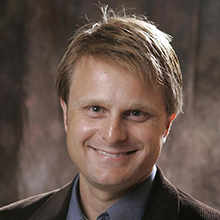
Dr. Collins is an established researcher in the areas of air pollution, environmental
inequalities, and health disparities. He is also the director of undergraduate studies
in Geography at UOU. His research on environmental health has been funded by the National
Institute of Minority Health and Health Disparities, National Science Foundation,
Environmental Protection Agency, and National Aeronautics and Space Administration.
While at UTEP, Collins gained experience in the scientific and administrative leadership
of undergraduate research training programs both in his role as a Provost’s Faculty
Fellow with the Campus Office of Undergraduate Research Initiatives and as a PI on
a multi-PI team for BUILDing SCHOLARS, which is one of ten sites in the NIH-funded
BUILD initiative. As director of the Institutional Development Core, which had a budget
of $4.5 million in direct costs, he oversaw the development of a novel research-driven
curricular program (including new course-based undergraduate research experiences),
searches for key personnel (multiple new tenure-track faculty members and postdoctoral
personnel) to support the program, improvements to biomedical research training environments
across campus, small grant programs for faculty, and a mentoring awards program.
About the Faculty Mentors
HAPPIEST includes a pool of faculty mentors from:
- the physical sciences
- engineering (e.g., atmospheric science, chemical engineering, environmental engineering, exposure science)
- the biomedical sciences (e.g., neurology, pulmonology, psychiatry)
- the socio-behavioral sciences (e.g., sociology, geography, demography, political science)
thereby fostering the development of transdisciplinary perspectives among student participants as well as collaborations across faculty-led research teams. Each year, students have the opportunity to work with some of these faculty.
| Mentor | Department | Environmental Health Focus | Potential Summer Project |
| Amanda Bakian | Psychiatry | Air pollution and the risks of psychiatric outcomes including autism spectrum disorder, suicide, and depression | Investigate the relationship between patient-reported mental health outcomes and air pollution levels in Salt Lake County |
| Tabitha Benney | Political Science | Air pollution sensing, COVID-19, Risk assessments of air quality and the policy processes | Electric bus air quality monitoring platform: findings and implications |
| Adrienne Cachelin | School of Environment, Society and Sustainability | Community-engaged research | Examine climate anxiety among university students |
| Timothy Collins | School of Environment, Society and Sustainability | Environmental health disparities, environmental justice, and effects of air pollution on children | Analyze relationships between air pollution, economic disadvantage, and intellectual disability among children in the Salt Lake City School District |
| Scott Collingwood | Pediatrics | Novel methods of exposure monitoring | Healthy Homes—Assessing and improving indoor air quality |
| David Curtis | Family & Consumer Studies | Examining place-based features (including built and natural environments) and health | Examine associations between air pollution and cardiovascular health |
| Sara Grineski | Sociology | Air quality and its socially and geographically uneven effects on children’s health | Examine associations between air pollution and standardized test scores at Utah public schools |
| Kerry Kelly | Chemical Engineering | Links between energy, air quality, and human health, with an emphasis on aerosol formation | Evaluate the effect of sound walls on air quality using low-cost sensors in an underserved community that is requesting a sound wall |
| Anne Kirchhoff | Pediatrics | Air pollution and cancer survivorship | The impact of air pollution on cancer survivors |
| Monika Lohani | Psychology | Mental health | Examine health impacts and health disparities related to climate change |
| Daniel Mendoza | City & Metropolitan Planning, Atmospheric Sciences & Pulmonology | Exposure mechanisms, health outcomes, and design of observation platform for air pollutants mounted on electric light-rail trains | Measure levels of air pollution in Salt Lake and learn how to quantify the economic impact of negative health outcomes in order to develop compelling policy solutions |
| Robert Paine III | Pulmonology | Uncovering mechanisms by which air pollution impacts pulmonary health | Study the mechanisms by which air pollution impacts pulmonary innate immune responses |
| Cheryl Pirozzi | Pulmonology | Effects of air pollution on pulmonary diseases | Analyze association of air pollution exposure with rare pulmonary diseases, and identify susceptible patient populations |
| Alexandra Ponette-Gonzalez | Dept of City & Metropolitan Planning | Heat and health | Examine inequalities in extreme summer heat in urban areas |
| Jeff Rose | Parks, Recreation, and Tourism | Political ecology | Examining the social and environmental justice elements of homelessness across the urban-wildland interface |
| Jennifer Shah | School of Environment, Society and Sustainability | Mental health | Examine climate anxiety among university students |
| Ken Smith | Population Studies & Family and Consumer Studies | Social, environmental, and genetic origins of rates of aging in humans | Examine health effects of air pollution using medical records of all persons in Salt Lake City who live near the light rail and measures of air pollution collected from air monitors mounted on trains |
| Jim VanDerslice | Division of Public Health | Exposure estimation and spatial methods, with a focus on community exposures and health outcomes | Impacts of ambient air pollution on pre-term birth and associated healthcare costs. |
Meet the Summer 2025 HAPPIEST Faculty Mentors
The Summer 2024 faculty mentors are an outstanding group of faculty who are conducting cutting-edge research on air pollution and health from multiple disciplinary backgrounds. Click on the links below to read their HAPPIEST project description as posted on the SPUR webpage and to apply to work on their project.
Available Projects
David Curtis
Who is Sensitive to Exposure to Air Pollution? Physiological and Psychosocial Mechanisms to Cardiovascular and Metabolic Disease
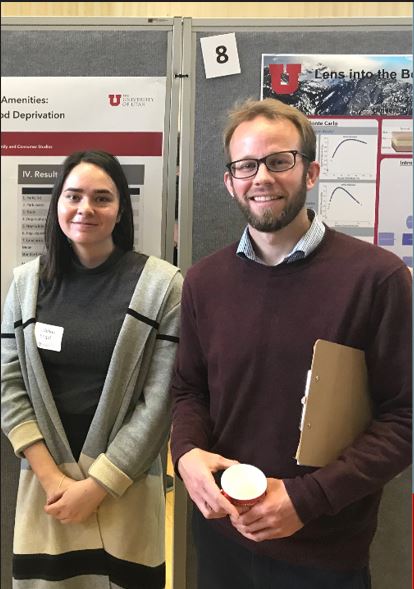 Project Background
Project Background
This research project will investigate the relationship between long-term air pollution exposure and cardiometabolic health outcomes, with a focus on differences in sensitivity by age and biological sex. Moreover, we will test physiological and psychosocial mechanisms of the link between air pollution and cardiometabolic health that may account for demographic differences in sensitivity. For this project, students will use longitudinal data from the Midlife in the United States study for more than 7,000 participants, with the follow-up period covering up to twenty-five years (from 1995 to 2019). The MIDUS study leverages an extremely rich set of measures and data collection protocols, and is well-suited for the current project.
Tabitha Benney
Integration of Traditional Ecological Knowledge with STEM Curriculum on the Wind River Reservation
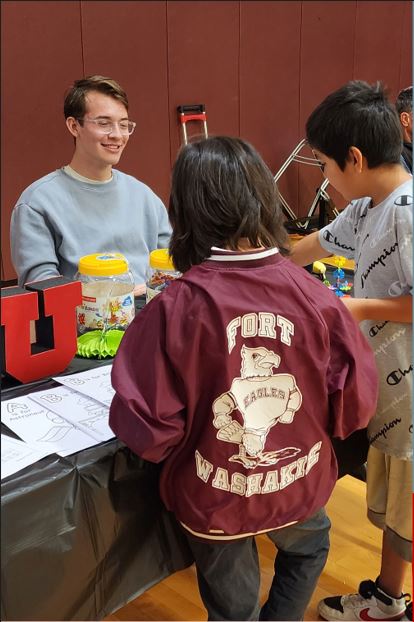 Project Background
Project Background
Data from the U.S. Department of Education in 2019, shows that Native American students had the lowest on-time graduation rate in the United States. In 2023, three school districts on the Wind River Reservation in Wyoming, the Native American students experienced both lower graduation and attendance rates than the state average (Shippen, 2023; Maloney, 2023). In addition, previous work has indicated that this issue has been exacerbated by environmental hazards such as air pollution, food insecurity, and energy scarcity. To address this issue, our team has begun a study in Wind River to better understand how to improve educational outcomes, especially in the STEM fields.
Sara Grineski/Tim Collins
Homelessness, Air Quality, and Park Displacement Events
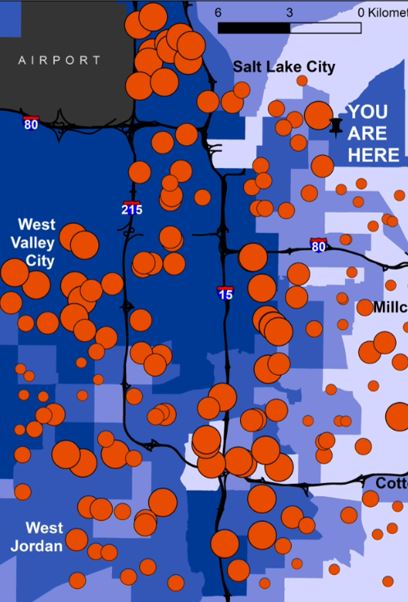 Project Background
Project Background
Homelessness presents both social and environmental concerns. People living in tents, tarps, and other rudimentary shelters represent a very visible social justice concern. People experiencing unsheltered homelessness are more likely to suffer from environmental disamenities, primarily through higher daily exposure to poor air quality, poor water quality, and weather-related disasters, among others. This population is also subject to unexpected and traumatic abatements and displacement events. While such events are generally unpredictable, specific public spaces (Pioneer Park and Liberty Park) have regularly scheduled displacement during weekly summer markets.
Jeff Rose
Resident Perspectives on Air Pollution and Environmental Injustice in Salt Lake County
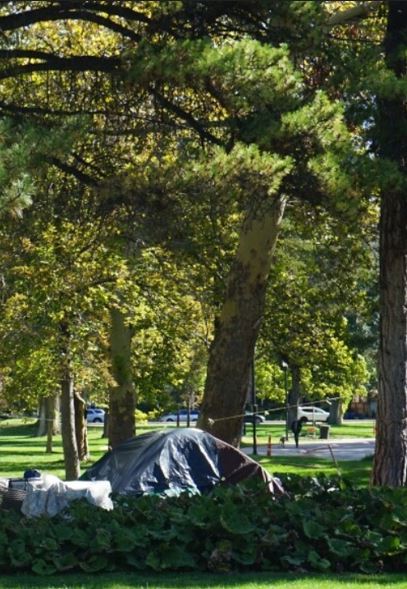 Project Background
Project Background
Utah is the fastest growing state in the US, and Salt Lake County (SLCo) is the most densely populated portion of the state. SLCo periodically experiences the worst air quality in the nation as a result of winter-time cold air pools, wildfires, and dust storms. Air pollution in the region frequently exceeds the PM2.5 24-hour national ambient air quality standard. SLCo is facing increasing air quality burdens associated with its rapidly growing population, the development of Utah's new Inland Port, increasing vehicle miles traveled and transportation emissions, gravel operations, and desiccation of the Great Salt Lake (GSL).
Program structure
HAPPIEST runs in collaboration with the U’s Summer Program for Undergraduate Research (SPUR). SPUR provides undergraduate students with an intensive ten-week research experience under the mentorship of a U faculty member, and it emphasizes the development of a diverse and inclusive group of student participants. Through SPUR, HAPPIEST participants engage in:
- welcome and closing receptions
- peer advising
- weekly education events
- bi-weekly program meetings
- optional on-campus housing
HAPPIEST students also participate in programming focused on environmental health that is not extended to other SPUR students. SPUR closes with the Summer Symposium, which gives students the opportunity to present their work to the U community. Like their SPUR peers, HAPPIEST students are required to present their research at this event.
HAPPIEST students have a home on campus in NEXUS, the iNterdisciplinary EXchange for Utah Science directed by Dr. Lori Kowaleski-Jones, where HAPPIEST meetings and trainings
take place. Housed within the College of Social and Behavioral Science in a new, state-of-the-art
building in the heart of campus, NEXUS promotes collaboration among all U departments
and colleges through joint research resources, faculty exchange programs, faculty
mentoring programs, interdisciplinary summer workshops, interdisciplinary conferences,
and faculty and student training programs in a variety of research methods across
diverse research fields.
Who is eligible?
Admission to HAPPIEST (and SPUR) is competitive, and applicants must meet all of the following criteria to be considered:
- be a matriculated, degree-seeking U undergraduate student in the subsequent fall semester (beginning or continuing a college career and not graduating before December)
- eligible to work in the US
- able to commit to approximately 35–40 hours per week of employment during the duration of the program (late May –early August)
- be at least 18 years old at the start of the program
- Applicants should be from underrepresented groups, as defined by the National Institutes of Health: Blacks or African Americans, Hispanics or Latinxs, American Indians or Alaska Natives, Native Hawaiians, and other Pacific Islanders
While rising sophomores and juniors are particularly encouraged to apply, previous college coursework in specific subjects or research experience are not required.
How to apply?
HAPPIEST applicants should apply through the online SPUR portal. The deadline to apply is January 26, 2025.
Students will be asked to provide their contact, demographic and academic information; a resume or CV; an official transcript; a personal statement; professional references; and project preferences as part of their application. In the 500-word personal statement, students will describe their reason for applying to do summer research, what they hope to gain from this program, the research they are interested in conducting, any technical skills they possess, and any previous research experience. They will provide the names and contact information of two references, preferably U faculty. Letters are solicited from these references and added to the student’s file.
Applicants are asked to select up to three mentors/projects listed in the portal and rank them in order of preference. HAPPIEST projects will be identified by a note and a disclaimer that only students from underrepresented racial and ethnic groups are eligible to apply. Applicants may select three HAPPIEST projects or a mix of HAPPIEST and SPUR projects. Only applicants working on HAPPIEST projects will be in HAPPIEST. Applicants on other SPUR projects will just be in SPUR.
HAPPIEST is funded by a R25 grant from the National Institutes of Environmental Health
Sciences.

